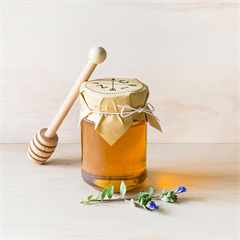Honey, often celebrated for its cultural significance, is presented in a variety of containers across the world. These containers, including honey jars, reflect diverse cultural practices and rituals. In this article, we’ll embark on a global journey to explore the cultural significance of honey jars.
Hexagonal Honey Jars:
- Western Europe: Hexagonal honey jars, with their beehive-like design, are symbolic of the hardworking honeybee. They are a common choice in Western Europe and evoke a sense of rustic charm.
Traditional Pots and Vessels:
- Middle East: In Middle Eastern cultures, honey may be stored in decorative ceramic pots. These pots often have intricate designs, reflecting the artistry of the region.
Gourd Containers:
- Africa: In some African communities, hollowed-out gourds serve as containers for honey. These containers are deeply rooted in local traditions and hold cultural significance.
Wooden Barrels and Baskets:
- Asia: In parts of Asia, honey is traditionally stored in wooden barrels or woven baskets. These containers reflect the region’s craftsmanship and historical storage methods.
Modern Glass Jars:
- Global Adoption: The clear glass honey jar, while modern, has become a universal symbol of honey packaging. Its transparency showcases honey’s natural beauty and appeals to consumers worldwide.
Gifts and Celebrations:
- Rituals and Festivals: Honey jars play a role in religious ceremonies, festivals, and celebrations around the world. They are often offered as gifts symbolizing sweetness, prosperity, and good fortune.
Harmony of Tradition and Modernity:
- Cultural Evolution: The evolution of honey jars reflects the blending of tradition and modern packaging methods. While modern glass jars dominate, traditional containers continue to hold cultural significance.
Honey jars not only serve as vessels for honey but also as carriers of cultural heritage and symbolism. Across continents, these containers embody the sweetness of cultural diversity and the timeless appreciation of nature’s treasures.



























